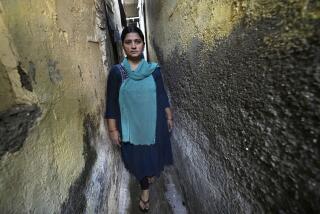INTERNATIONAL BUSINESS: SPOTLIGHT ON INDIA : The Indian Economy
- Share via
The Clinton administration has named India one of the world’s top 10 emerging markets for American business. A series of economic reforms launched in 1991 has helped the South Asian country begin to realize that potential. These reforms, including reduced tariffs, a devalued currency and new export-oriented investment, have allowed the Third World nation’s industries, exports and foreign investments to grow rapidly. Economists expect these reforms to eventually transform India into Asia’s next exporting powerhouse. There is concern, however, about the country’s urgent social problems and its weak infrastructure.
Agriculture
India, the seventh-largest country in the world, is rich in natural resources such as rubber, timber, chromium, coal, iron, manganese, bauxite, mica salt and gypsum. Agriculture is the country’s major employer, providing jobs for almost 70% of the work force. India is one of the world’s top producers of both rice and wheat and is No. 3 in cotton production. These and other crops such as sugar cane, jute, oil seeds, tea, coffee and tobacco help agriculture contribute roughly 33% of the country’s gross domestic product.
Manufacturing
India’s industrial growth has resulted in widespread improvements and diversity in the country’s manufacturing base. India boasts a huge pool of skilled, low-to-moderate-cost workers, including professional managers. It has the world’s second-largest number of software engineers and significant strength in high-tech fields such as supercomputers and aerospace research. The country’s major manufacturing industries include cotton and jute textiles; iron, steel and other basic metals; petrochemicals; electrical machinery and appliances; transport equipment; chemicals; cement; power; electronics; and food processing.
Infrastructure
To complement its expanding economy, India has rolled out an aggressive program of adding infrastructure and telecommunications to serve its 900 million residents. India, the world’s second-most-populous nation and its largest democracy, needs major improvements to its outmoded roads, telephone services and power systems. Social problems also remain urgent, with more than 360 million people living below the official poverty line, 430 million who can’t read or write and half the population without clean drinking water.
Consumer Spending
Although a third of its citizens live in poverty, the nation’s expenditures on consumer goods and services have increased about 14% every year since 1990. Household electronics sales have posted strong gains and were up 30% annually during that period, with autos and motorcycle sales growing at 16% and 15%, respectively.
Trade
Bombay and Calcutta are the nation’s major ports and are among the 10 largest in the world. The volume of goods coming in and out of these ports has increased since the country took steps to make itself more friendly to foreign investors. Consequently, total trade between India and the United States grew by 46.2% during the 1991-94 period, making Uncle Sam India’s largest trading partner.
* Figures for 1995-97 are forecasts.
Sources: Bank of America World Information Services; “Doing Business in Asia: The Complete Guide,” Sanjyot P. Dunung; Indian Embassy; Times and wire reports
Researched by JENNIFER OLDHAM / Los Angeles Times
More to Read
Inside the business of entertainment
The Wide Shot brings you news, analysis and insights on everything from streaming wars to production — and what it all means for the future.
You may occasionally receive promotional content from the Los Angeles Times.








